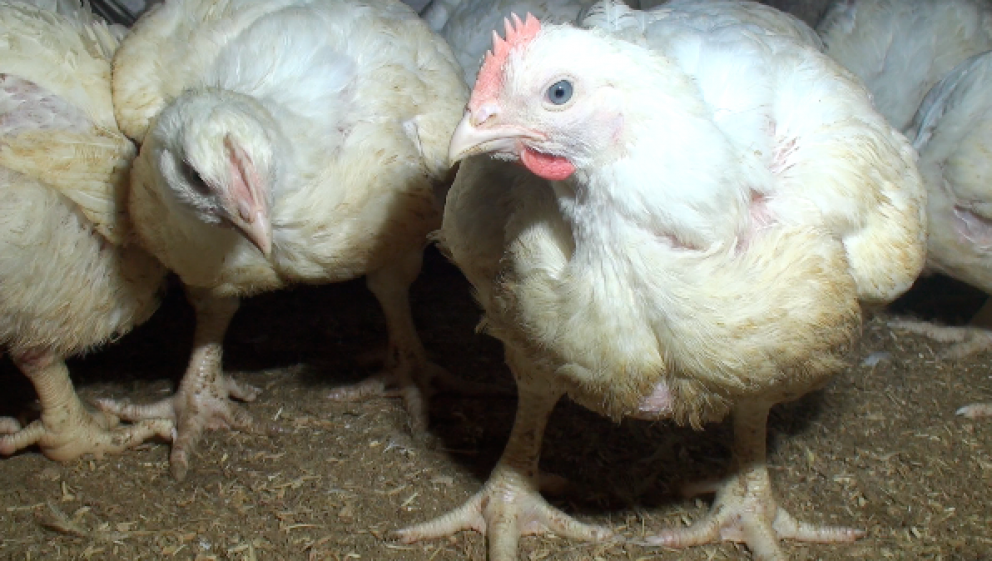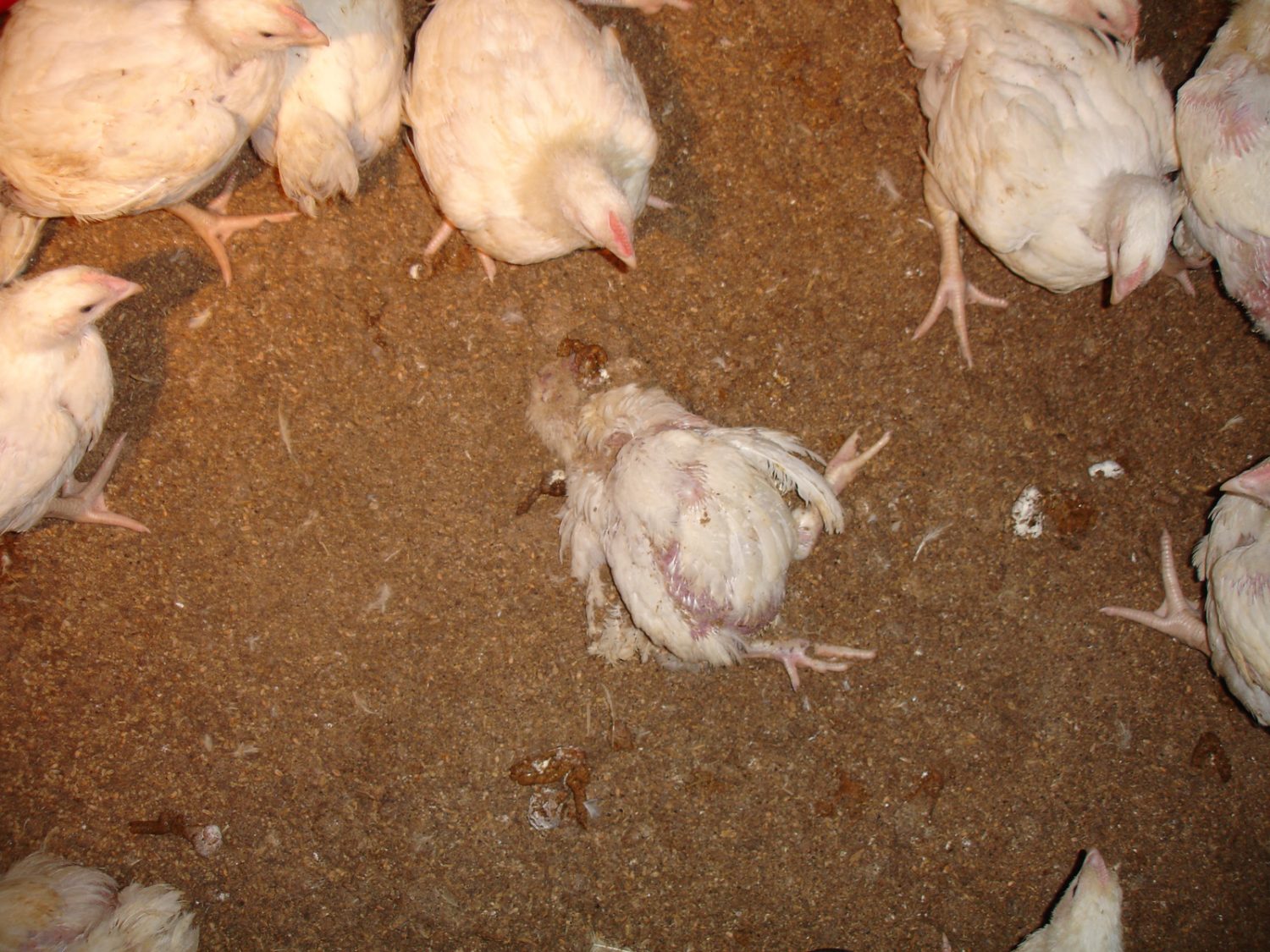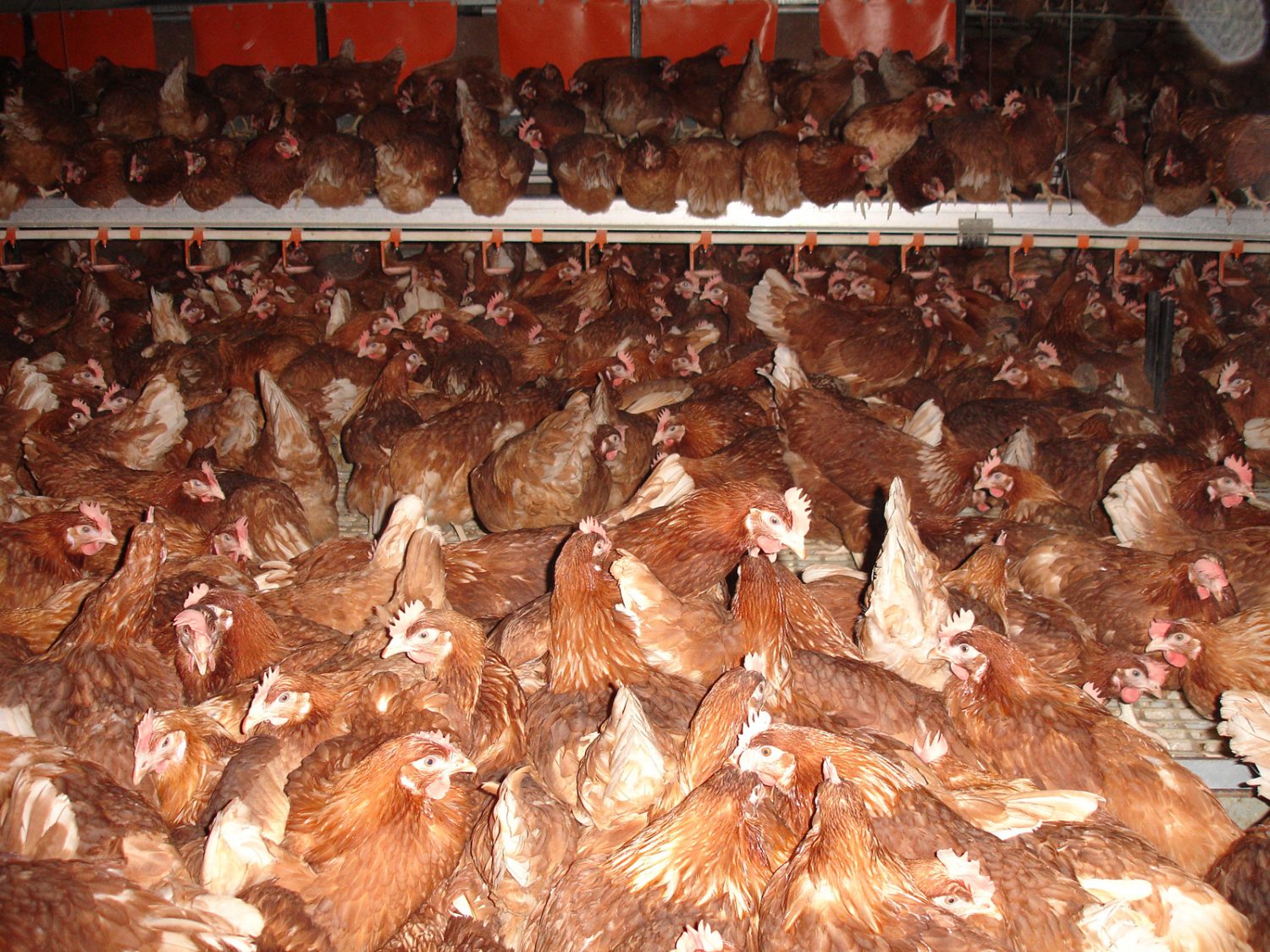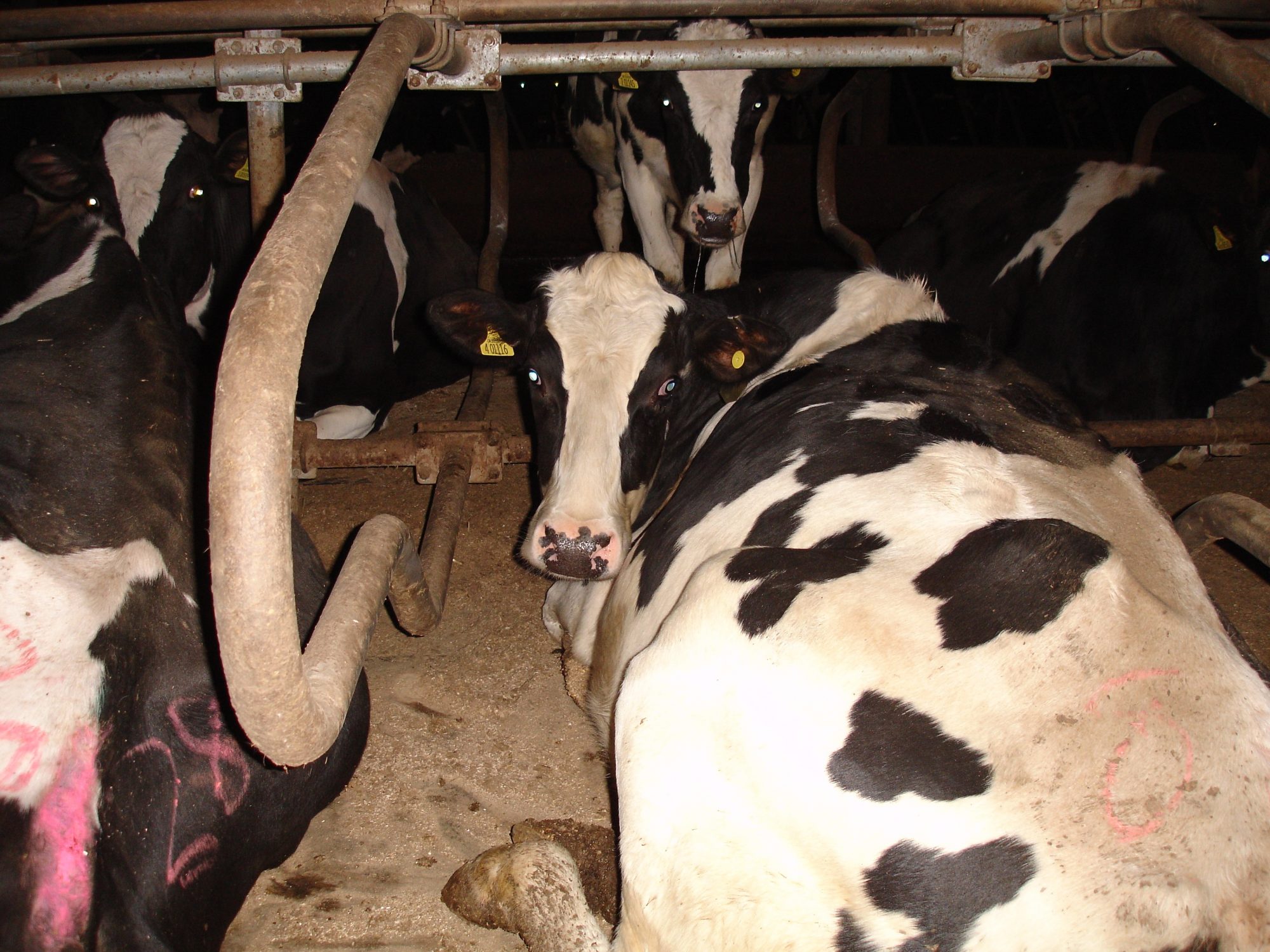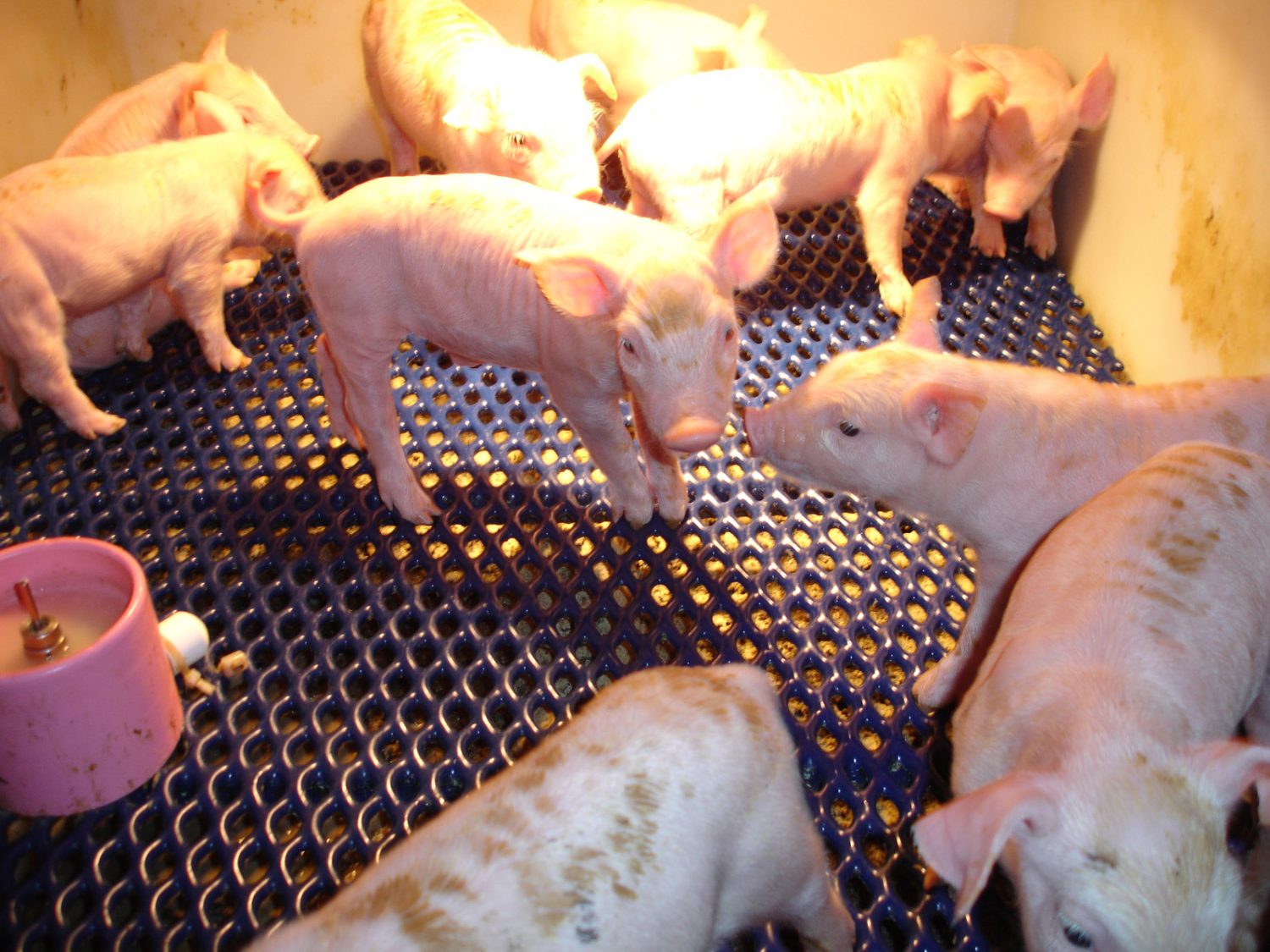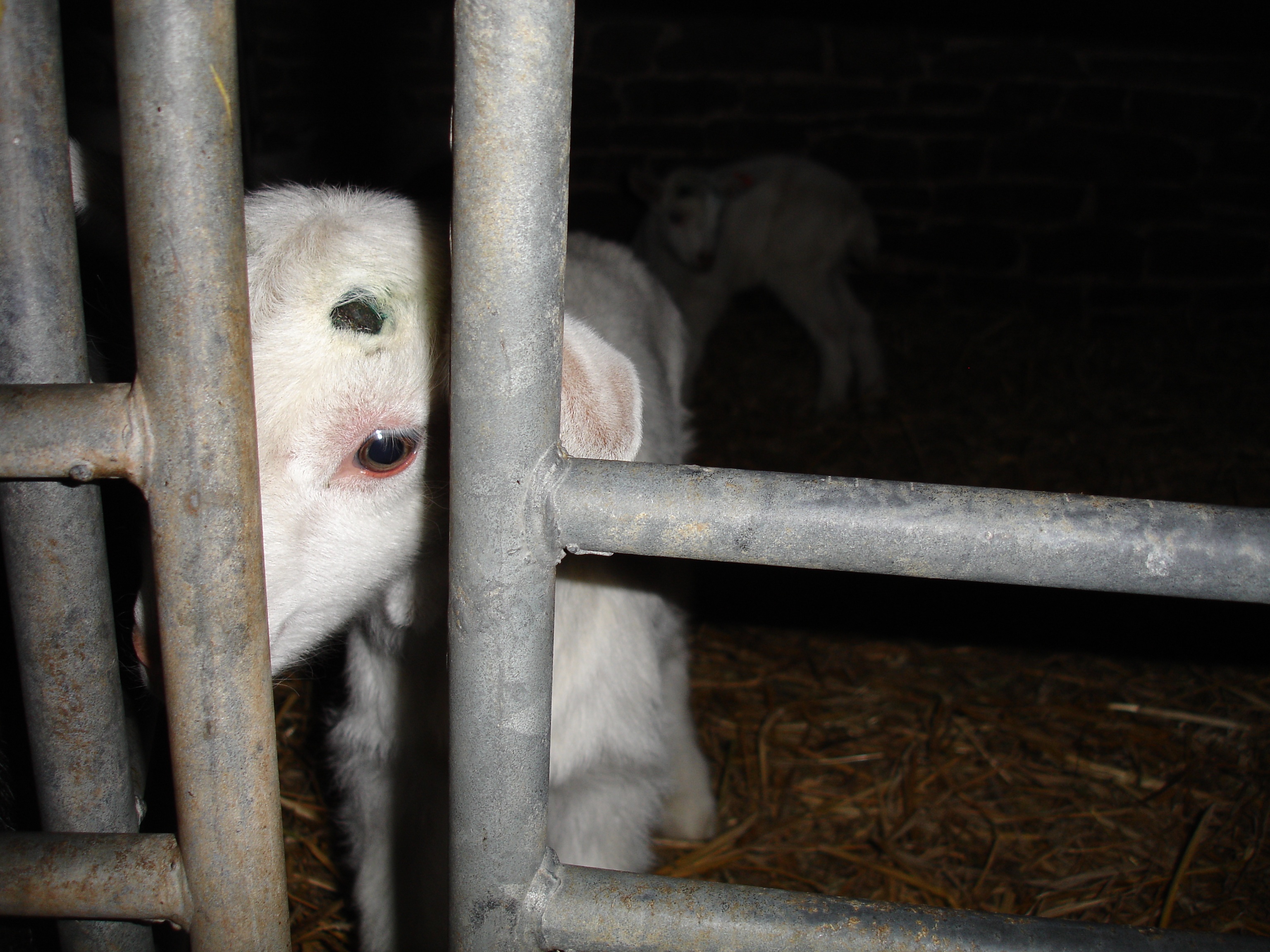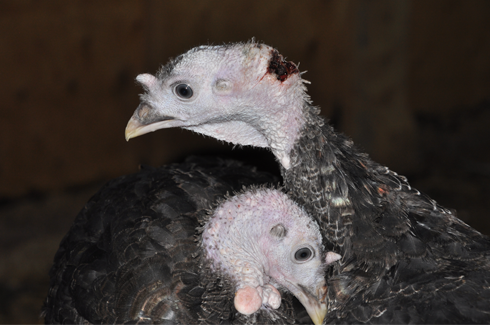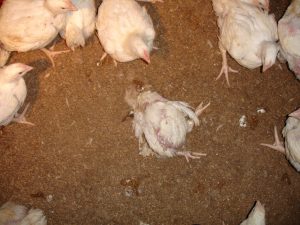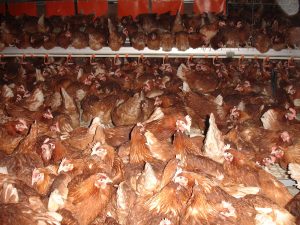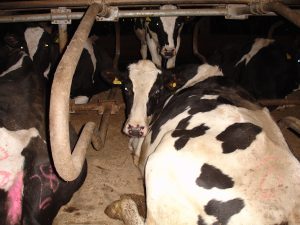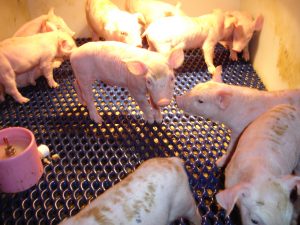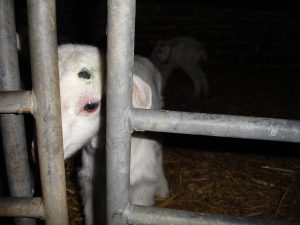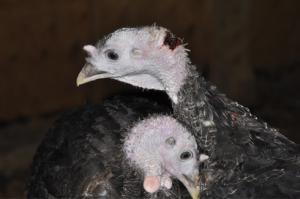In the UK, a large percentage of laying hens are confined in tiny cages where they have little more room per hen than an A4 piece of paper. Restricted movement can also contribute to osteoporosis (brittle bones). They are denied all that makes their short lives meaningful. Modern commercial hens have been bred to produce vast numbers of eggs. This depletes the hen’s store of calcium and can result in high levels of osteoporosis and fractures. Several tiers of crowded cages make inspection difficult, and in large cage sheds injured birds are often left to die unnoticed.
The cramped conditions with resulting stress, means that some resort to injurious pecking of cage mates. In an attempt to prevent this, many chicks routinely have the ends of their beaks removed without anaesthetic.
The life of so-called ‘free range’ hens is hardly better – hundreds, sometimes thousands of animals are forced to live in sheds. The stocking density is often so high that some hens may not ever manage to access the outdoors, through the small number of ‘pop holes’.
Chickens have a natural lifespan of 6 years or more but after just 60-70 weeks of age, the hen’s productivity declines they are sent to slaughter and their bodies are processed into cheap meat products such as ‘pet’ food.

